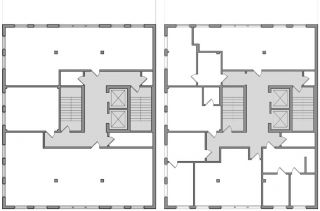
www.buildingsandcities.org/insights/news/retrofit-videos.html
Retrofit at Scale - Videos

Watch short presentations & responses from "Making Mass Retrofit a Reality" outlining what capabilities & capacities are needed for implementation.
This launch event for a Buildings & Cities special issue "Retrofitting at Scale: Accelerating Capabilities for Domestic Building Stocks" was jointly hosted by B&C and CREDS on 20 October 2021.
There is a large gulf between current slow retrofitting rates and the portion of domestic buildings that rapidly need intervention to meet climate targets. This webinar draws on some of the research in recent Buildings & Cities special issue which begins to address this gap by focusing on delivering retrofit at scale.
Key questions
- What policy initiatives can create the right conditions (energy service models, business retrofit models and consumer demand) to encourage mass retrofit?
- What coordination between actors (central or local government, private sector companies, professional organisations) is needed to enable mass retrofit?
- What specific capabilities and capacities need to be created in construction supply chains? How can these be supported?
Speakers
Short presentations by some of our speakers:
Faye Wade Introduction to the special issue
- key lessons
Janette Webb MBE Housing retrofit: six types of
local authority energy service models
Joanne Wade OBE Domestic retrofit supply chain
initiatives & business innovations: an international review
Kate Simpson Domestic
retrofit: understanding capabilities of micro-enterprise building practitioners
Respondents
This is followed by two key respondents who
briefly consider the feasibility and policy implications in the presented research.
Stefan Moser
European Commission, DG ENERGY, Head of Unit: Buildings and Products
(ENER.B.3)
Lord Deben Chair, Climate Change Committee
Latest Peer-Reviewed Journal Content
Youth engagement in urban living labs: tools, methods and pedagogies
N Charalambous, C Panayi, C Mady, T Augustinčić & D Berc
Co-creating urban transformation: a stakeholder analysis for Germany’s heat transition
P Heger, C Bieber, M Hendawy & A Shooshtari
Placemaking living lab: creating resilient social and spatial infrastructures
M Dodd, N Madabhushi & R Lees
Church pipe organs: historical tuning records as indoor environmental evidence
B Bingley, A Knight & Y Xing
A framework for 1.5°C-aligned GHG budgets in architecture
G Betti, I Spaar, D Bachmann, A Jerosch-Herold, E Kühner, R Yang, K Avhad & S Sinning
Net zero retrofit of the building stock [editorial]
D Godoy-Shimizu & P Steadman
Co-learning in living labs: nurturing civic agency and resilience
A Belfield
The importance of multi-roles and code-switching in living labs
H Noller & A Tarik
Researchers’ shifting roles in living labs for knowledge co-production
C-C Dobre & G Faldi
Increasing civic resilience in urban living labs: city authorities’ roles
E Alatalo, M Laine & M Kyrönviita
Co-curation as civic practice in community engagement
Z Li, M Sunikka-Blank, R Purohit & F Samuel
Preserving buildings: emission reductions from circular economy strategies in Austria
N Alaux, V Kulmer, J Vogel & A Passer
Urban living labs: relationality between institutions and local circularity
P Palo, M Adelfio, J Lundin & E Brandão
Living labs: epistemic modelling, temporariness and land value
J Clossick, T Khonsari & U Steven
Co-creating interventions to prevent mosquito-borne disease transmission in hospitals
O Sloan Wood, E Lupenza, D M Agnello, J B Knudsen, M Msellem, K L Schiøler & F Saleh
Circularity at the neighbourhood scale: co-creative living lab lessons
J Honsa, A Versele, T Van de Kerckhove & C Piccardo
Positive energy districts and energy communities: how living labs create value
E Malakhatka, O Shafqat, A Sandoff & L Thuvander
Built environment governance and professionalism: the end of laissez-faire (again)
S Foxell
Co-creating justice in housing energy transitions through energy living labs
D Ricci, C Leiwakabessy, S van Wieringen, P de Koning & T Konstantinou
HVAC characterisation of existing Canadian buildings for decarbonisation retrofit identification
J Adebisi & J J McArthur
Simulation and the building performance gap [editorial]
M Donn
Developing criteria for effective building-sector commitments in nationally determined contributions
P Graham, K McFarlane & M Taheri
Join Our Community

The most important part of any journal is our people – readers, authors, reviewers, editorial board members and editors. You are cordially invited to join our community by joining our mailing list. We send out occasional emails about the journal – calls for papers, special issues, events and more.
We will not share your email with third parties. Read more



Latest Commentaries
COP30 Report
Matti Kuittinen (Aalto University) reflects on his experience of attending the 2025 UN Conference of the Parties in Belém, Brazil. The roadmaps and commitments failed to deliver the objectives of the 2025 Paris Agreement. However, 2 countries - Japan and Senegal - announced they are creating roadmaps to decarbonise their buildings. An international group of government ministers put housing on the agenda - specifying the need for reduced carbon and energy use along with affordability, quality and climate resilience.
Building-Related Research: New Context, New Challenges
Raymond J. Cole (University of British Columbia) reflects on the key challenges raised in the 34 commissioned essays for Buildings & Cities 5th anniversary. Not only are key research issues identified, but the consequences of changing contexts for conducting research and tailoring its influence on society are highlighted as key areas of action.